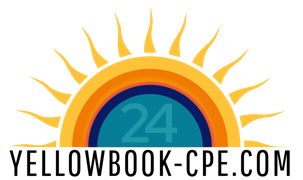Description
The Audit Risk Formula includes a self-study e-book delivered to you immediately upon purchase for 3.5 hours of CPE credit.
As an auditor, you need to know how to assess risk and choose relevant evidence but also how to justify your choices! The AICPA has promulgated a significant amount of guidance and terminology regarding evidence- even going as far as to lay out a quasi-mathematical audit risk formula (ever heard of AR=DR x CR x IR?) – all in an effort to help auditors document their decisions and assess strength of their evidence.
Professor Jim Crockett explains the terms and concepts surrounding the AICPA’s evidence standards and audit risk formula to you in this short text. He begins by outlining a general theory of evidence and how evidence is used by various disciplines. Next Professor Crockett explains audit procedures appropriate for securing evidence and the weights that should be assigned to the various types of evidence. This base of knowledge allows the Professor to explain the evidence terminology and formulas promulgated by the AICPA.
This course is designed to give auditors an in-depth understanding of how auditee assertions, audit objectives, audit risks, internal controls, and the attributes of different forms of evidence affect an auditor’s decisions about how to secure and evaluate audit evidence.
Course objectives include:
- Recognize evidence per audit standards
- Relate the requirements of audit evidence to the evidence requirements associated with other professions and several audit standard-setting bodies
- Identify sufficient and appropriate evidence
- Identify options for gathering audit evidence
- Identify the components and relationship of the components of the audit risk model
- Determine whether evidence is sufficient and appropriate
- Identify the relationship of an audit objective to audit procedures
- Identify standards for documenting audit evidence
- Identify evidence-related requirements associated with potential fraud
- Distinguish review evidence from audit evidence
CPE credit: 3.5 hours
NASBA Category of Study: Auditing
Program level: Basic
Prerequisites: None
Advance preparation: None
Who should attend: Auditors
Instructional method: Self-study text with online qualified assessment. QAS SS
Author: Professor James R. (Jim) Crockett, DBA, CPA. (Ret.)
This course may not qualify for the 24 hour Yellow Book CPE requirement but will qualify for the 56 hour Yellow Book CPE requirement. For more on how Yellow Book hours work, please watch this video or read this blog post.
READ INSIDE THIS BOOK: https://yellowbook.ideamakr.com/types-of-audit-evidence-2.html
Questions? You can find our FAQ here.
What People Say About This Course
“I liked learning more about how the audit risk is related to inherent risk, control risk, and detection risk. The concept of evidence as explored throughout the text was also very good food for thought.” -The Audit Risk Formula Student
“The understanding of how the different standards define or determine appropriate procedures to mitigate risk [will benefit me most]. The fraud examples and red flags will also benefit me greatly. I also think I will benefit from thinking through the audit risk formula, which is not something I had heard of before.” -The Audit Risk Formula Student
“I liked all of the examples that the book used to lighten some of the heavier, more textbook material.” -The Audit Risk Formula Student
“A lot of the material was related to financial audits and I do not complete these.” -State Agency Internal Auditor
“Very informative with added comments to further increase understanding of the course topics.” -CPA in Public Practice
“I’ll start looking for “red flags,” making decisions on sufficiency and appropriateness of evidence, and linkage (objectives, audit risk, and procedures).” -CPA in Public Practice

 Yellowbook-CPE.com is registered with the National Association of State Boards of Accountancy (NASBA) as a sponsor of continuing professional education on the National Registry of CPE Sponsors. State boards of accountancy have final authority on the acceptance of individual courses for CPE credit. Complaints regarding registered sponsors may be submitted to the National Registry of CPE Sponsors through its website:
Yellowbook-CPE.com is registered with the National Association of State Boards of Accountancy (NASBA) as a sponsor of continuing professional education on the National Registry of CPE Sponsors. State boards of accountancy have final authority on the acceptance of individual courses for CPE credit. Complaints regarding registered sponsors may be submitted to the National Registry of CPE Sponsors through its website: